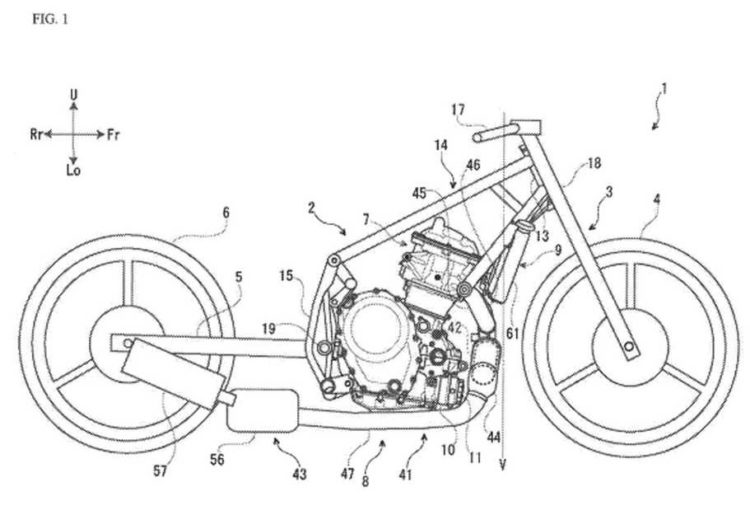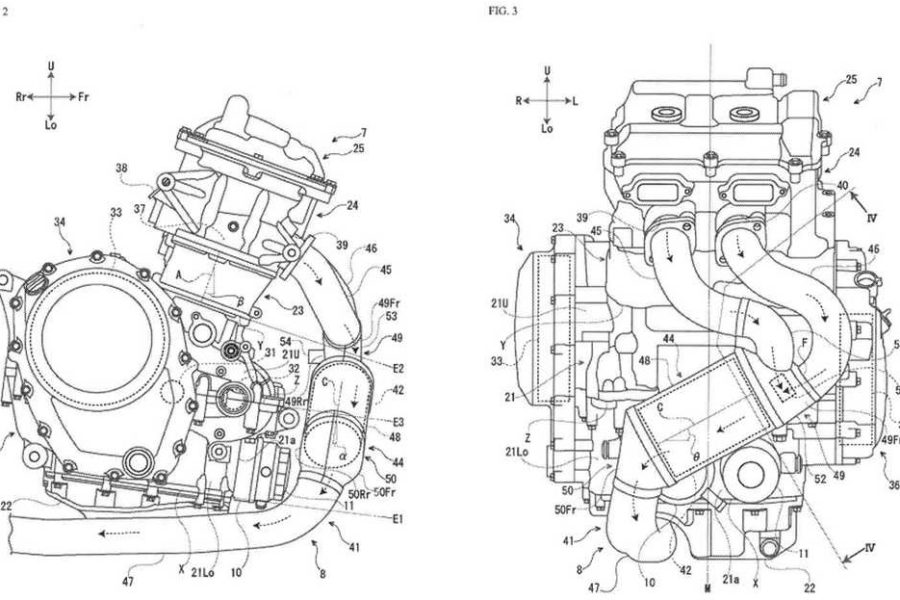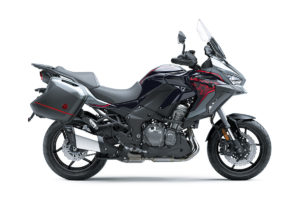Suzuki last found major success with a parallel-twin engine with the GS500, which began production in 1989. More recently, the V-twin SV650 has taken up the GS500’s entry-level mantle at Suzuki. However, several patents for parallel-twin motorcycles have been filed in recent years by the company based in Hamamatsu, Japan, and may point to the resurgence of that engine layout for Suzuki.

Suzuki’s parallel-twin patent drawing.
Previous Suzuki patents and show displays, including the 2013 Tokyo Auto Show concept called the Recursion, have featured a turbocharged parallel twin, but the most recent filing has ditched the forced induction and associated intercooler. The reduction of power output caused by the removal of the turbo, points to this new version being aimed at middle-weight or entry-level performance, as opposed to the litre-bike killer the Recursion was speculated to be.
One of the main points of the 2020 patent is the location and orientation of the catalytic converter, situated in front of the engine and pointing cross-wise. This configuration is said to allow the cat to be located as close as possible to the exhaust ports, for quicker light-up, while not sacrificing ground clearance, as an under-engine cat would.
Compared to a V-twin engine, the parallel-twin layout eliminates two camshafts, reduces weight, and simplifies the exhaust system. The reduction in weight and complication also comes with a reduction in production costs.
With no direct information from Suzuki, the trail of patents and concepts are the only clues as to the final product that may or may not ever see the light of day. Whereas the Recursion might have been a lightweight superbike or supernaked, this latest revelation seems to point to a possible SV-650 replacement. The Suzuki parallel-twin might again see success. Or not.
Sources: cycleworld.com, rideapart.com







